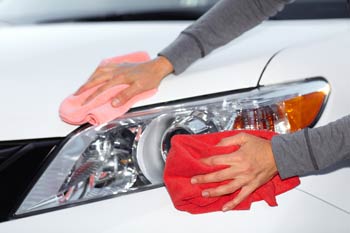 It’s a sight no driver wants to see: Rust spots on the surface or underside of your car. You thought you were taking care of the exterior of your vehicle, so how could this have happened?
It’s a sight no driver wants to see: Rust spots on the surface or underside of your car. You thought you were taking care of the exterior of your vehicle, so how could this have happened?
Scientifically speaking, rust needs an anode, cathode and electrolyte to form. At a base level, this equation occurs when metal comes in contact with humidity, although other elements like salt and weather conditions could also be involved.
Why Does This Happen?
Beyond the scientific explanation, there are a few reasons for rust formation on your vehicle:
- With Salt: Salt carries electrons, which, when part of the above equation, allow rust to quickly form. Cars in ocean-side communities are especially susceptible to salt-related rust, as are vehicles in colder climates where the roads are salted often.
- Exposed Metal: Nicks, scratches and dents all expose your car’s metal, which then becomes vulnerable to rain and sun. After regular exposure to these elements or extreme temperatures the metal oxidizes, eventually resulting in rust.
- A Lack of Care: Rust can also form without your car getting scratched. Keeping it in one place outdoors for several months at a time where it remains exposed to the elements could result in oxidation. After a while, you might see bubbling or flaking paint, dark spots on the paint or pit marks on the metal trim.
What Can You Do?
Paint acts as the first line of defense against rust, but oxidation has been known to occur underneath. Therefore, to reduce your vehicle’s chances for rust formation, try the following:
- Wash the car every two weeks and apply a wax on top.
- Apply a sealant to protect damaged sections of the paint.
- If you live in a humid climate, add a lubricant or antirust spray.
- Regularly check the fenders, trim and underside, the three spots where dirt is more likely to accumulate.
At the first sign of rust, schedule an appointment with Da Silva Auto. Our Naugatuck location offers maintenance services and painting; for your car, we’ll remove the rust, touch up the appearance, then seal or wax it. To learn more, give us a call today.




